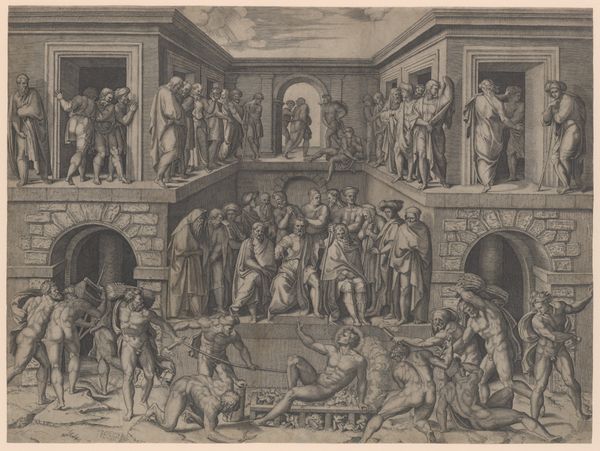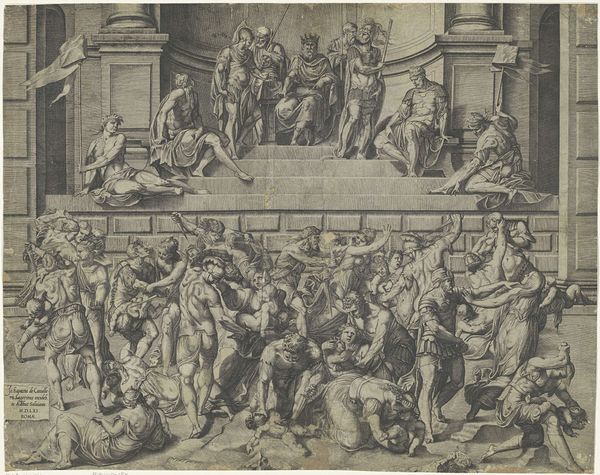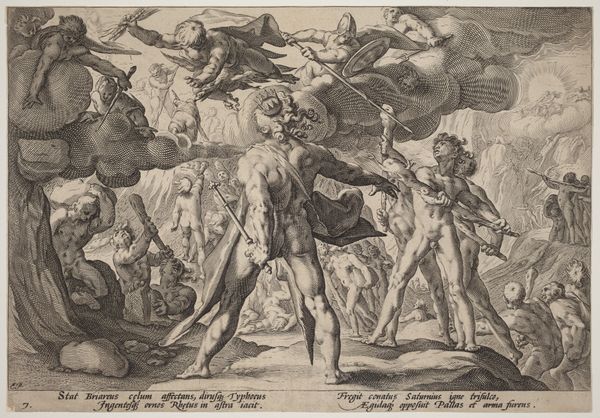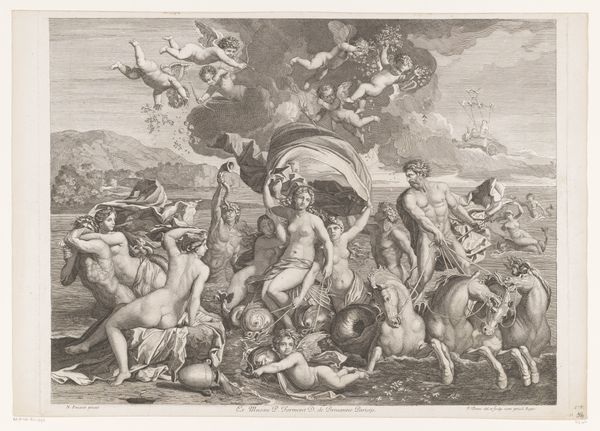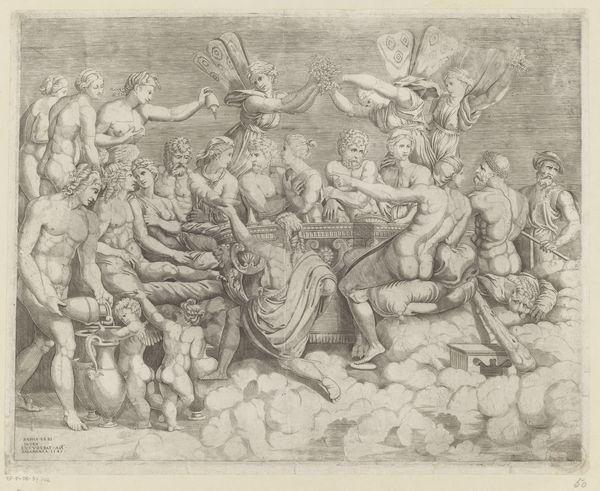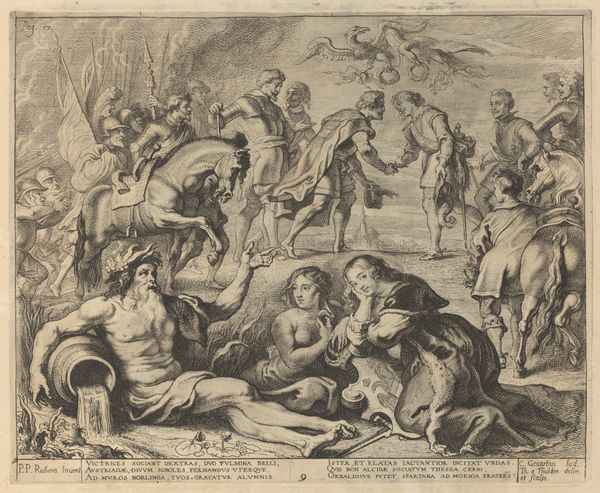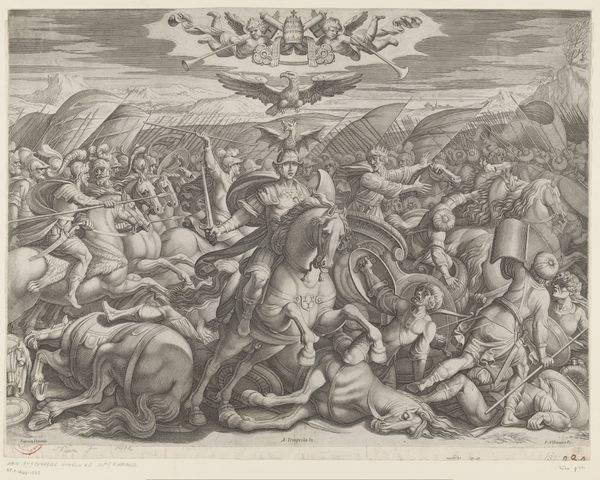
Dimensions: height 188 mm, width 495 mm, height 187 mm, width 493 mm
Copyright: Rijks Museum: Open Domain
Curator: These "Two Friezes with Gods," made sometime between 1599 and 1647, offer a fascinating glimpse into artistic interpretations of classical mythology. Editor: It strikes me immediately as a study in contrast. The upper frieze seems stately, almost detached, while the lower frieze is far more dynamic, even chaotic. Curator: Indeed, each frieze offers a distinct vision. The upper scene, crowded with deities, embodies a sense of Olympian order. Mercury, with his caduceus, appears as a familiar symbol, as does the figure of what I perceive to be Zeus. These symbols carry considerable cultural weight. Their presence affirms ideals of stability. Editor: Yes, the linear arrangement in that top scene lends itself to that interpretation of order. Look how it juxtaposes with the riotous scene below, with figures seemingly tumbling over one another. Curator: Note the significance of clouds upon which the deities in both compositions recline. In iconography, clouds signify divinity and otherworldliness. The prominence given to what might seem mere scenery indicates a deeper connection to the sacred nature of these events. What are your thoughts? Editor: The composition employs chiaroscuro quite skillfully, guiding the eye and giving depth to the etching, especially within the bottom frieze. Look how strategically the engraver manipulates light to focus attention on the central figures in each section. I’d like to know more about the line weight, and the methods they might have used. Curator: In their time, imagery of gods acted as a common visual language, a method of sharing cultural values. These figures reminded viewers of ancient myths and morals, reinforcing the links between the past and the present. Editor: Agreed, though I also consider how these compositions exploit principles such as balance and proportion to construct a coherent visual experience regardless of subject matter. Whether deities, heroes, or pastoral figures, there is an underlying formal integrity. Curator: I find this integrity in how well the symbolism ties into the overall intended narrative. Ultimately, artworks such as this can tell us a great deal about collective aspirations in that period. Editor: And the enduring principles that drive the creation of compelling art! This examination has proved more engaging than I anticipated.
Comments
No comments
Be the first to comment and join the conversation on the ultimate creative platform.


